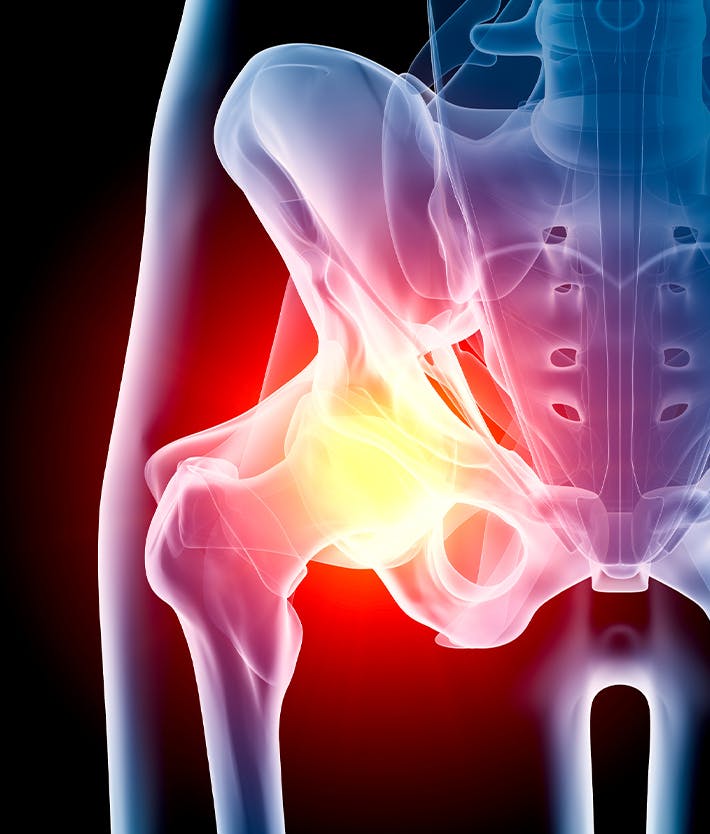If your hip pain is severe, the best way to get relief maybe with a total hip replacement. With the latest hip resurfacing techniques, we can replace the damaged areas of your hip joint and preserve healthy bone – saving your normal motion and increasing the likelihood that you can make a full return to impact sports after recovery.
What is Hip Resurfacing?
The hip joint is a ball and socket joint. The ball – the femoral head – fits into the socket of the pelvis bone. Hip resurfacing involves removing only the damaged bone and cartilage from the ball and socket, and replacing it with a smooth metal cap on the trimmed thigh bone. A metal shell is then placed inside the hip socket, and these two components move together in a fluid, pain-free motion.
Hip resurfacing is an alternative to total hip replacement surgery. With a total joint replacement, both the ball and socket are removed entirely and replaced with plastic, metal, or ceramic parts.







